Along local roadsides and in open fields that are no longer maintained as farmland the Eastern Red cedar is found in abundance. In a field of hundreds of these evergreens there will be significant differences in color of needles, shape, and size, so that no two plants appear identical. This is a notable example of the genetic diversity of seedlings, and a reminder that even native plants can overpopulate disturbed sites.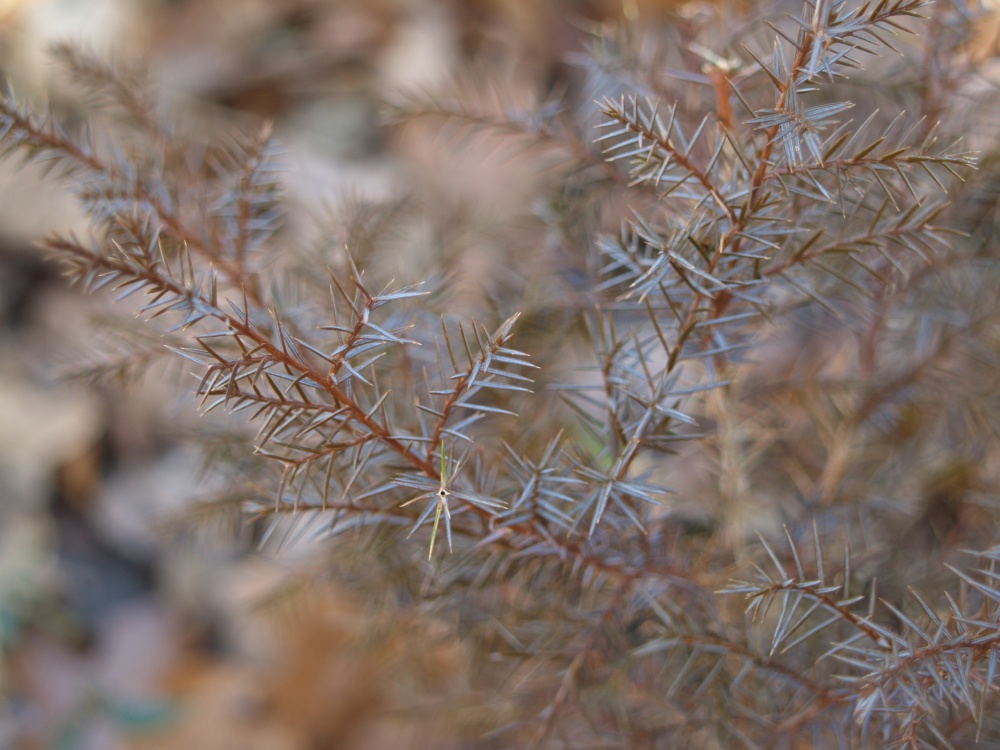
The red cedar is not a cedar at all, but a juniper (Juniperus virginiana, above), and besides native plant enthusiasts, I find that most people dismiss this tall growing evergreen as a weed due to its ubiquitous nature. It’s green to blue-green needles lack luster, and its often profuse, small blue-gray seed cones provide only modest interest. The red cedar’s wood is aromatic with an attractive marbled grain and is valued for cedar chests and small carpentry projects, but its greatest attribute for landscape use as an evergreen screen is that it’s native to much of the eastern United States.
Along the woodline that borders my garden there is one large, thinly branched red cedar that suffers in the deep shade, and there are dozens of smaller seedlings just beyond the edge of the heaviest shade. As they continue to grow some will be saved and encouraged to grow to screen the houses on the far side of this narrow section of forest.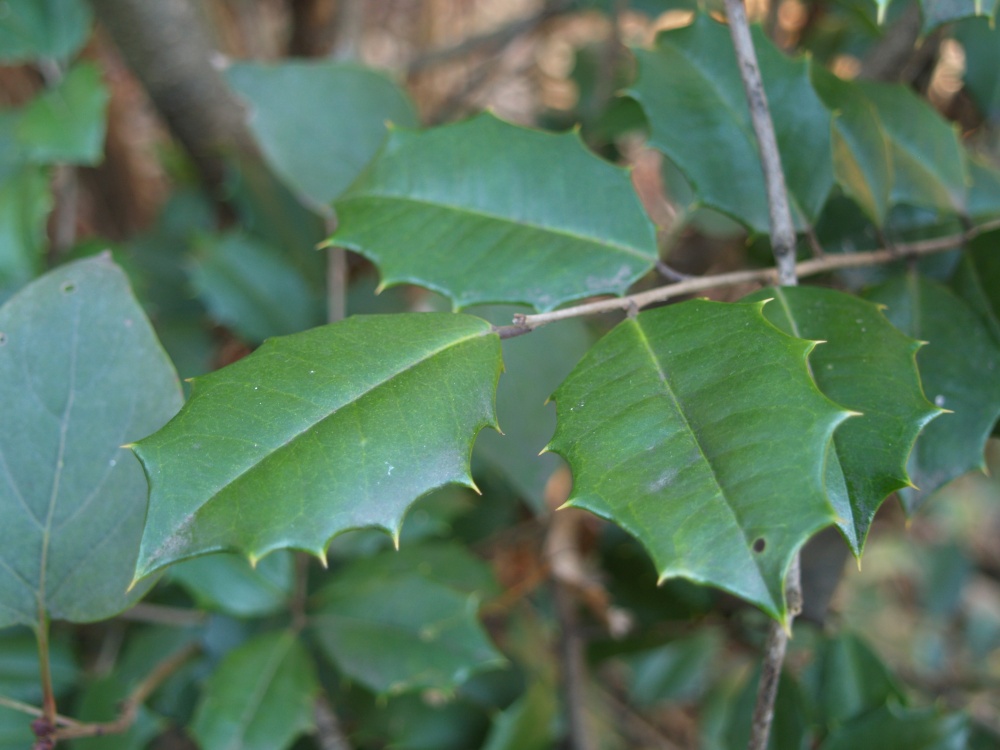
Beneath the forest’s canopy are also scattered small American holly (Ilex opaca, above) seedlings and several that have grown taller than six feet. These grow quite slowly in the dry shade, and even one seedling that sprouted in the middle of a more fertile garden bed in full sun barely inches along.
I have tried to keep other understory plants cleared away so that the hollies will someday grow large enough to join the red cedars in screening the garden’s southern border. I don’t know that I’ll live long enough for the seedlings to grow to this tall, so I’ll be planting a few more mature hollies to do the trick a few years sooner.
On the far side of the garden I’ve planted several other hollies, not evergreens but deciduous hollies (Ilex verticillata ‘Winterberry’, above) that are unremarkable until late in autumn when their large clusters of berries turn to red. Unfortunately, though the ‘Winterberry’ hollies are an understory plant in their native setting, they have become too shaded by neighboring hornbeams and have begun to fade in recent years.
Just below the ‘Winterberry’ hollies an itea (Itea virginica ‘Henry’s Garnet’ ) barely clings to life in the shade. ‘Henry’s Garnet’ is tolerant of wet or dry soils, sun or some amount of shade, but it has reached its limit. This was a dry spot beside the driveway where I could enjoy the hollies’ berries and the red foliage of the itea as I returned home on autumn evenings. The dry soil restrained the itea’s suckering habit (which is not bad at its worst), but I’ll soon need to grub out the tired plants and rework this area. Perhaps by thinning some tree branches I’ll be able to rejuvenate the shrubs, but I’m afraid the damage is too far along.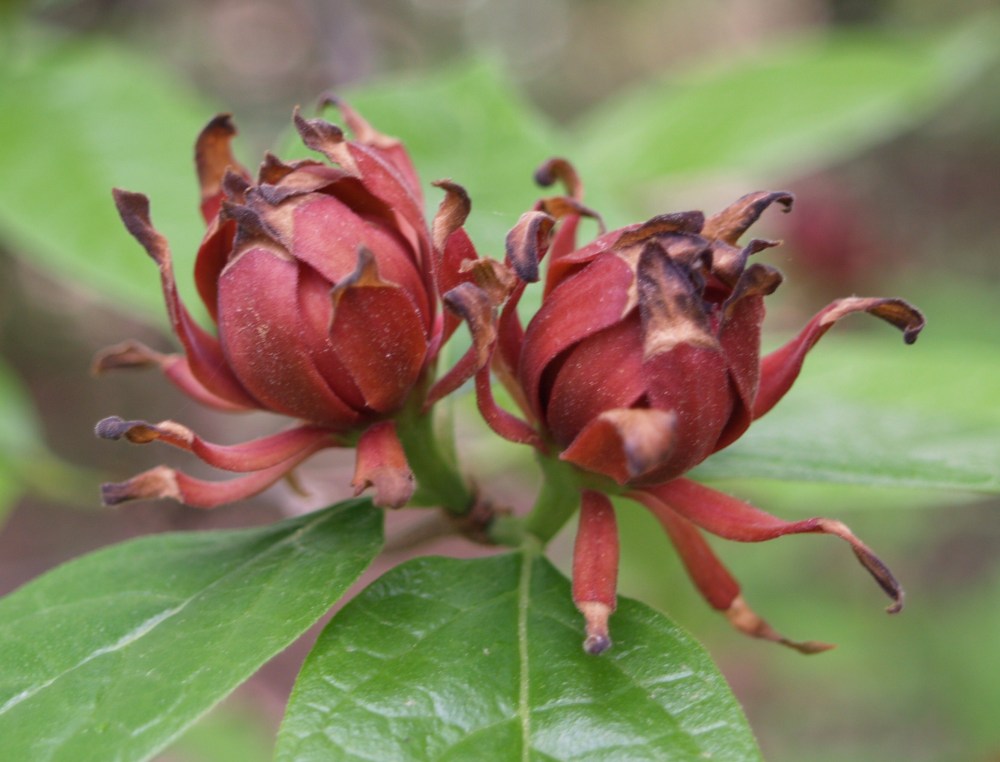
I have seen sweetshrub (or spicebush, Calycanthus floridus, above) planted in both sun and shade, but beneath towering tulip poplars at the edge of my garden they grow with an open, spreading form. The shade does not seem to bother the number of oddly constructed, fragrant, brownish-red flowers. After planting a handful with red blooms I was enamored enough of the plant to track down a few yellow flowered sweetshrubs (Calycanthus floridus ‘Athens’ below) that now grow in the shade beneath the aptly named Bigleaf magnolia.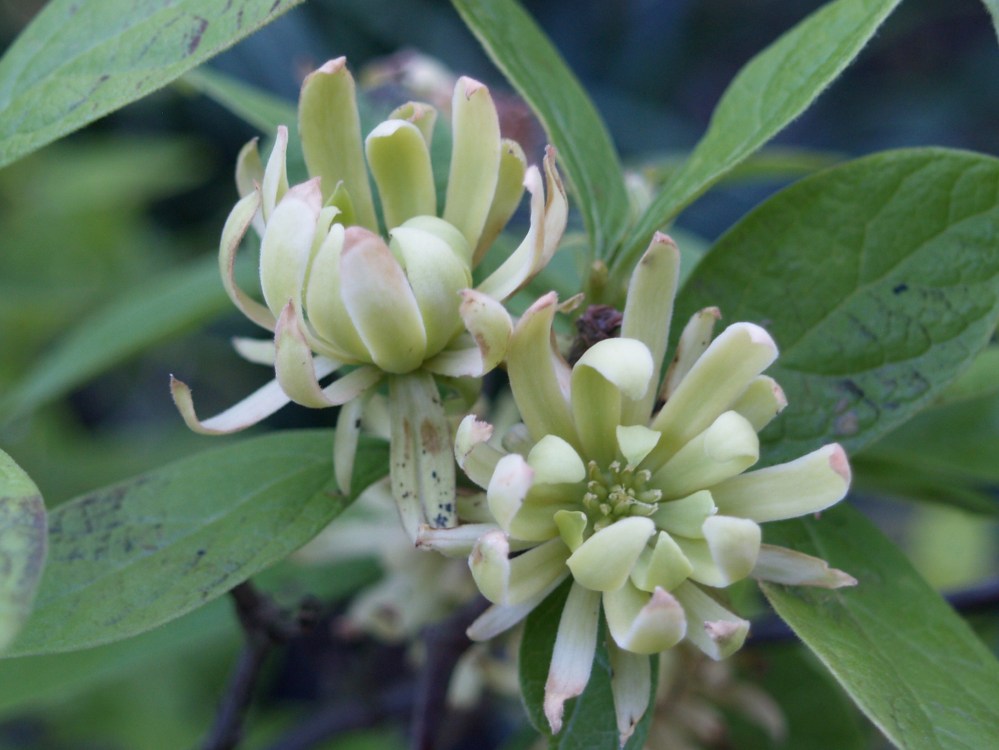
Nearby, in slightly less shade along one of the garden’s stone paths grows summersweet clethra (Clethra alnifolia ‘Rosea’ below). This spot is dry (though not the desert dry shade of the root infested soil only a few feet away), though clethra will be happy in all but the dampest ground. Clethra suckers and spreads slowly, and its habit is probably ill suited for the garden’s most prominent positions, but along this path its fragrant pink panicled flowers (that quickly fade to near white) are particularly enjoyable.
In this almost too dry shade I have planted selections of the native Mountain laurel (Kalmia latifolia, below), and they have struggled from the start. I know that they would prefer more regular irrigation, but that’s not likely to happen. Along a mountain trail that my wife and I hike frequently there are mountain laurels that tower over your head, and as much as I wish that mine would grow I’m afraid they won’t last that long.
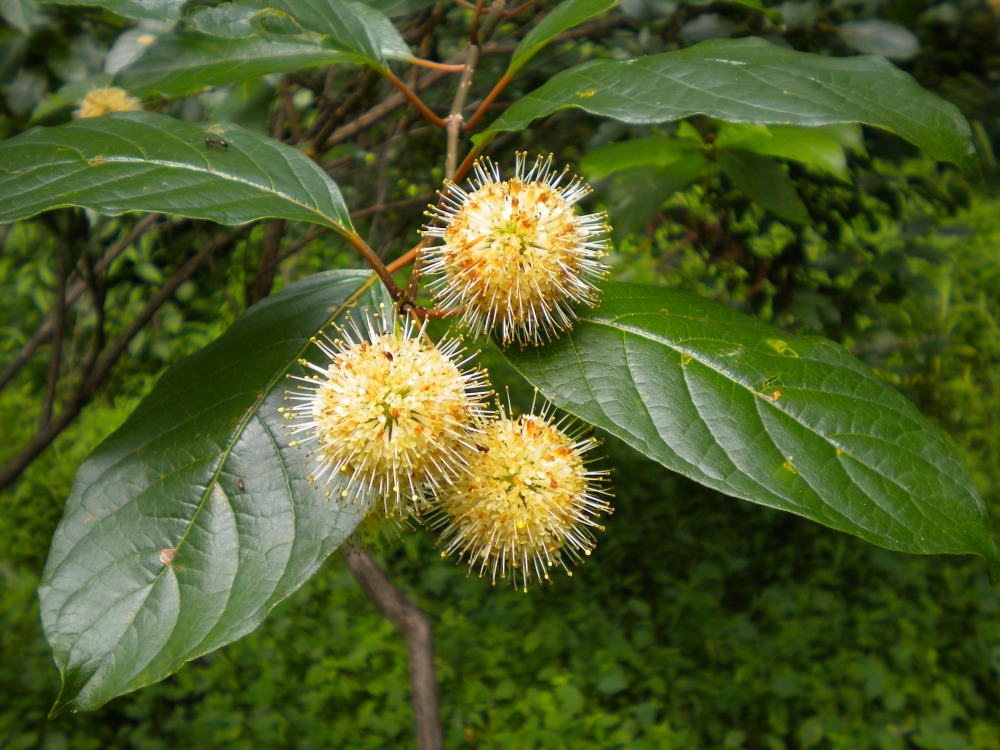
The lower end of the garden is often quite damp, with a few areas where water will stand for several days in a rainy spring. Here I’ve planted buttonbush (Cephalanthus occidentalis, above), and in slightly less damp soil highbush blueberries (Vaccinum corymbosum, below). I first saw buttonbush in a boggy spot at the base of the mountain trail as bees and butterflies swarmed its flowers, and it thrives in this swampy ground.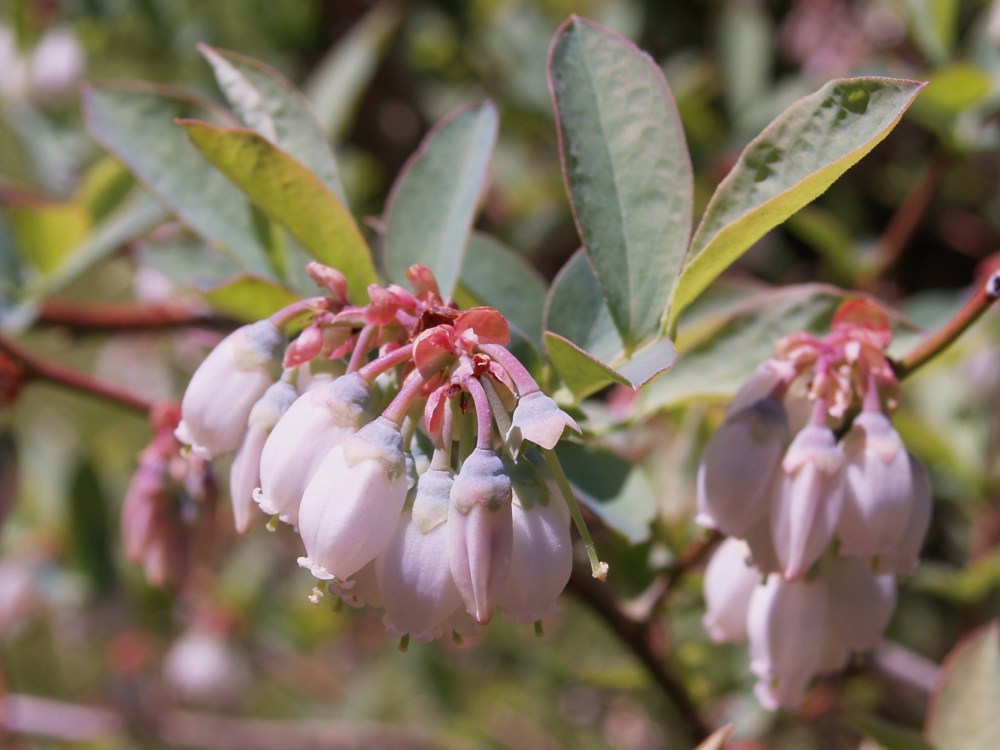
I’ve grown blueberries for years, though a group of eight large shrubs that were transplanted from a blueberry farm in Oregon were lost to construction of a large pond in the garden. Some years I would harvest many handfuls of fruit as I wandered through the garden, then detoured back for another handful. A few handfuls made it back to house to share with my wife, but only a few. The new shrubs are half the size and until they grow up I leave the fruit to the birds, who enjoy it immensely and rarely wait for it to become fully ripe.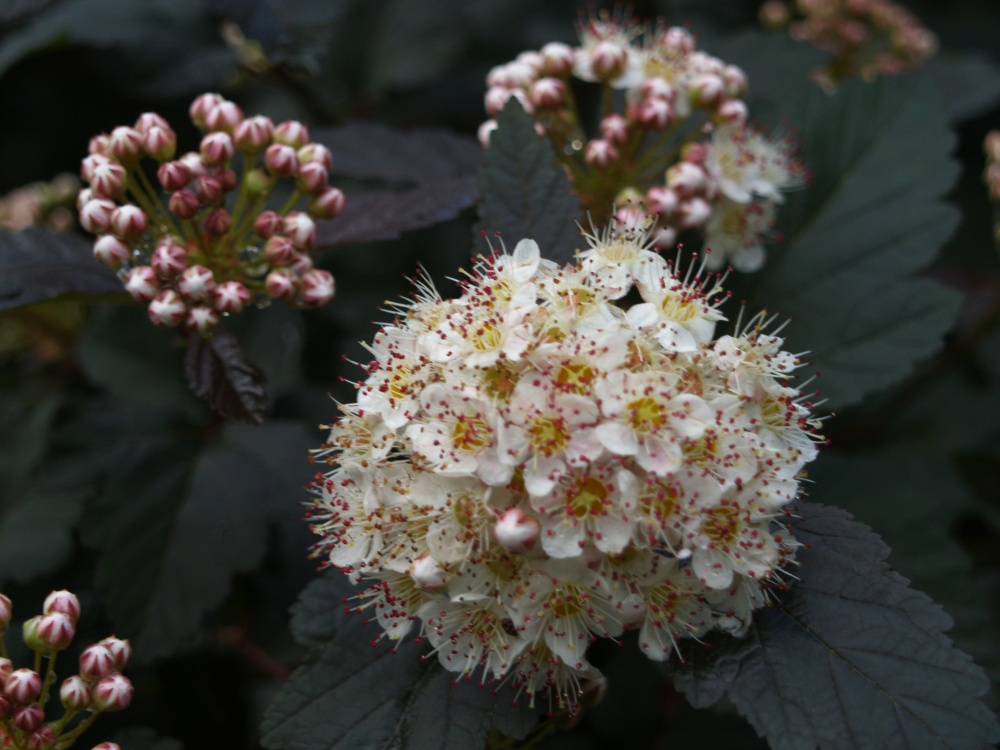
Along the slope that retains the lower side of the large pond I’ve planted a dark leaved selection of the native ninebark (Physocarpus opulifolius ‘Diablo’, above) and also a dark, cut leafed elderberry (Sambucus nigra ‘Black Lace, below). The large flower clusters of the ninebark are marvelous, but the shrub is a bit coarse and requires regular pruning.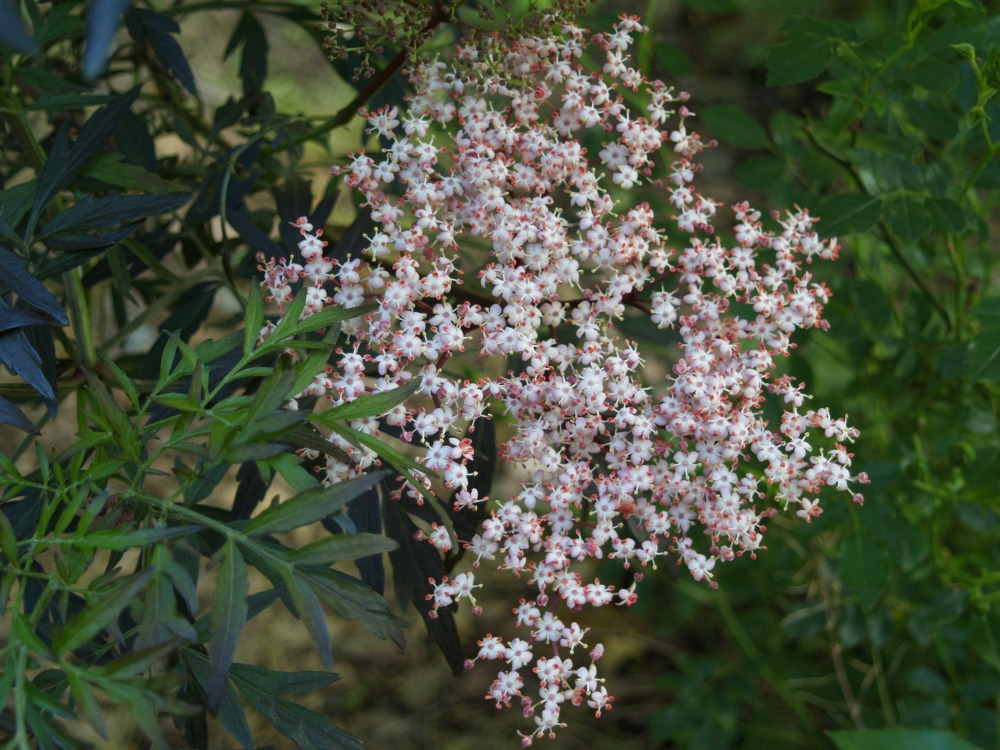
I’ve planted the elderberry beneath a shrubby crapemyrtle, but this hasn’t seemed to bother its sprawling habit (though it might limit the number of fruits, below). The leaves are somewhat similar to the dissected foliage of many Japanese maples, though the branching is not as graceful. 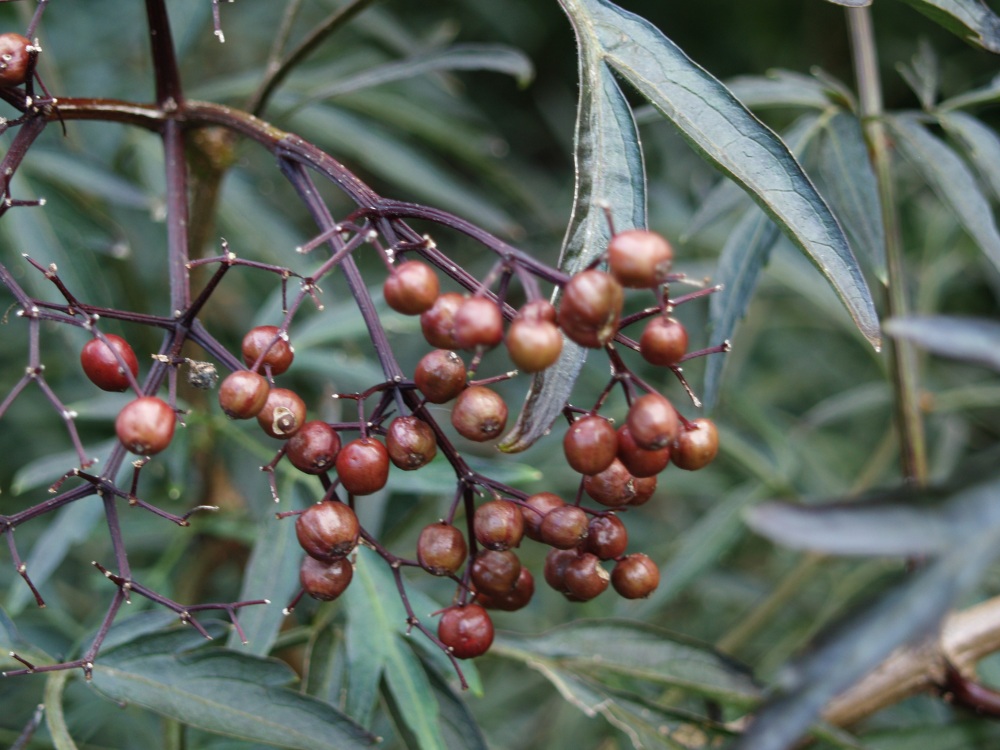
So far as I can figure these are the native shrubs and evergreens in the garden (though I could have missed one or two, or even ten). Some grow vigorously, and others barely at all. The natives are subject to the same problems as non-natives. They must be planted with suitable soil and sunlight exposure, and they benefit from occasional irrigation until their roots are established. I’ve had more than a few failures with native plants, but no more or less than with non-natives. Many have proven to be fine garden plants, regardless of their native habitat.
The next, and last stop on this tour of native plants in the garden will be perennials and vines, and there are many so this might have to be broken into two installments. In the meanwhile a few camellias (of Japanese origin) and the fragrant winter daphne are just about blooming in this extraordinarily warm winter, so there could be a bit of break before the native plant tour wraps up.
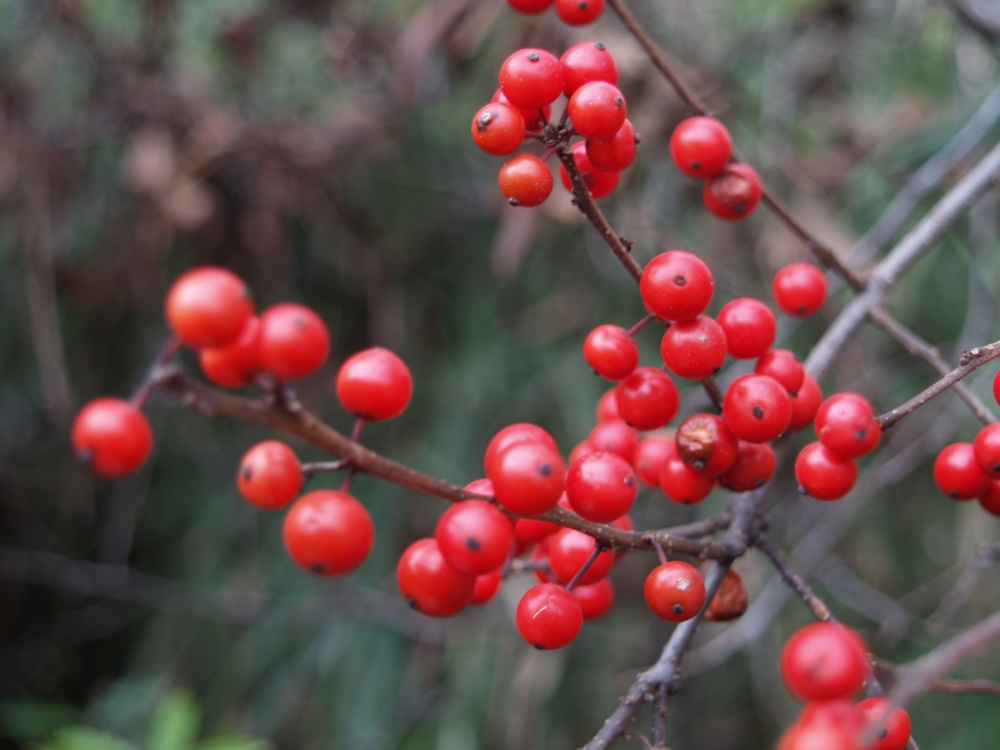
Hello Dave,
Seems that I need to plant some Holly. The winter berry is so brightly stunning! Seems I need in my landscaping a few more things that bloom in winter, but will have to research which ones would do well in the heartland of Carolina.
I was walking around yard today doing some trimming of bush clover that was huge and walked around to my twisted weeping lavender red bud and noticed that the branches seem alive but the trunk is split up it about a foot long split? That can’t be good news could it? No buds on it at all.
American smoke tree seems well in this worm winter here…
Have a great day and evening.
Most of these plants are native to the Carolinas, and many of the plants that I have blooming in my garden in early February will tolerate your summers without a problem.
The split on the trunk of your redbud is likely to be southwest bark injury. If the damage is on the southwest side of the trunk then this is certainly the problem. The winter sun heats the tree’s bark in the evening, and then the sun sets and temperatures drop suddenly. The bark expands with the rapid temperature drop and splits. The injury is slow to heal, but it seldom goes below the bark into the wood of the tree so it rarely effects the health of the tree.
Thanks Dave,
I am writing some of these plants down for my list for winter months… Love the look of the elderberry… reminds me of babies breath shape and little clusters of flowers…
So glad to know about this bark injury rarely effecting the health of the tree, and it is on the southwest side. I still am worried because the crack is deeper than the bark and is positively into the wood since the tree truck is so small in diameter. It is at least .5 inch into bark if not a little more and the split starts about 6 inches up the truck from the ground and is like I said about a foot long. The diameter of trunk is maybe just two inches. Very small yet… I am not sure if i could post a picture in here, but I don’t think so?…
You’ll find out soon enough if the injury is too severe. In any case I would expect that it will flower and leaf in the spring. The test will be if it survives the heat of summer. If so, you won’t have to worry any longer. I didn’t address the lack of buds in my last response, but flower and leaf buds are never evident on redbuds until shortly before they flower. Also, the wood of redbuds is extremely hard so it feels dead even when it isn’t.
Thank you so much Dave for this information. I will wait out spring and see what happens and when it comes to summer if it is still living I will baby it with watering on my mind once again…
Helps to know about the wood of red buds… My friend always tells me scrap the bark and if it is not green under there, it is dead. Knowing now about it not budding until before flowering also helps since I keep looking…
This weekend it is supposed to get down into the 20’s so maybe winter has arrived. It sure has been warm here this year so far… My roses are still blooming!
Thanks again and have a great weekend!